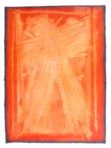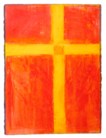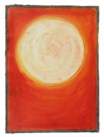ABOUT THE C.G. JUNG FOUNDATION
Newsletter of the C.G. Jung Foundation of Ontario
ISSN 1918-6142
Chiron is a newsletter that exists to support the work of the C.G. Jung Foundation of Ontario. It was established in 1980, and has existed in electronic form since 2006. Its name and masthead image, adopted at that time, are drawn from ancient Greek culture. In Greek mythology, Chiron was the last centaur, a son of the titan Cronus. He was famed for his wisdom, knowledge and skill at deciphering the will of the gods, to healing effect.

Volume 32, No. 1 Autumn 2012
Editor: Robert Black
| PDF version of this issue for easier printing |
Contents
- No News Yet
- New Analyst: Mary Lynne Tomlinson
- Report on Burning Issues
- Member profile: Johanne Ferguson
- Hearing and Not Hearing
- Editorial comments
- New in the Fraser Boa Library
No News Yet
We have nothing to report, yet, about the purchase of our and adjacent rental properties by a property developer. The Analysts’ Meeting has discussed priorities and models for the future, and the Board of Directors is still searching with professional help to find a place that will suit our requirements within the budget we have established. In the meantime, we live with a conditional lease on 223 St. Clair West.
“An understanding heart is everything in a teacher, and cannot be esteemed highly enough. One looks back with appreciation to the brilliant teachers, but with gratitude to those who touched our human feeling. The curriculum is so much necessary raw material, but warmth is the vital element for the growing plant and for the soul of the child.” C.G. Jung, “The Development of Personality, CW17, para. 249 (page 144). |
New Analyst: Mary Lynne Tomlinson
 OAJA has been pleased to welcome a new member-analyst. She has gotten involved in our community life right away, succeeding Robert Black as Library Chair as of the last Analysts’ Meeting in September 2012.
OAJA has been pleased to welcome a new member-analyst. She has gotten involved in our community life right away, succeeding Robert Black as Library Chair as of the last Analysts’ Meeting in September 2012.
Mary graduated in May 2011 from the International School of Analytical Studies (ISAP) in Zurich, Switzerland, and has established a practice here in Toronto whence she hails. Mary has degrees in Economics and Law (both a J.D. and a Masters) but she found that her passion led her to Jungian Analysis. When she was 23 she found an old second-hand softcover copy of Jung’s Memories, Dreams, Reflections and it became her centering touchstone for the next three decades when life became overwhelming.
Once her three children were old enough, she started training in Toronto with OAJA and then in Zurich and has been seeing clients for the last 5 years. Her love of books lead her to write a thesis entitled, What is it about a Mystery? on the detective story and why we are so enthralled with the genre. Mary has been reading them since she was 22 years old; interestingly, Jung also was devoted to them. Mary is a strong believer in the quality of the analytic relationship being the sine qua non of healing and transformation.
At present, Mary is also involved in a project with six other analysts from all over the world (via Skype) to re-examine Jung’s typology model. It is an area of Jungian study that doesn’t receive a great deal of attention in training and Mary has always found it intriguing.
Report on Burning issues
The theme for the last “Burning Issues” event was “Politics and Consciousness,” and the citation from Jung’s CW18, para. 1745: “What is the use of changing the external conditions if man’s inner attitude remains the same?”
Local analyst Tim Pilgrim was the moderator, and analysts Jean Connon Unda and Boshira Toomey were joined for this occasion by Foundation member and political activist Doug Worts. Twenty-one people were in attendance.
After three stimulating and thought provoking talks, a wide-ranging discussion with much audience participation generated a great deal of energy. People were so interested, in fact, that there was agreement that they would try to set up something more ongoing in order to continue the conversation. More on that as it emerges.
All in all a great success!
Member profile: Johanne Ferguson
In 1977, Johanne Ferguson found herself in a tissue-paper collage workshop run by New York analyst Edith Wallace. As she said later, “I’d never had a positive interior thought before that.” But with Edith’s unexpected words, “You’re an artist, you know,” ringing in her ears, Johanne adopted collage-making as a daily meditation, and thus embarked on her individuation journey.
A native of Winnipeg, Johanne grew up in a context in which virtually everyone around her was an extravert. The word wasn’t usually applied, of course, but by default the outer world and its many concerns – notably a husband and two sons, and later life in Montreal – became her principal focus, while the inner life suffered from neglect. She even discovered that her mother in law travelled frequently to New York City for analysis with Esther Harding, and knew that C. G. Jung’s books were around her house, but it was not talked about and made no discernable impact. Collage-making was her secret life, and for a time she seldom crossed paths with other seekers. And she started to feel stirrings of unease, even culpability about that inner secret.
Jung writes concisely and powerfully about individuation and guilt in a passage which bears reproduction (CW 18, par.1094-1099),
Individuation and collectivity is a pair of opposites, two divergent destinies. They are related to one another by guilt. . . . Individuation cuts one off from personal conformity and hence from collectivity. . . . It means stepping over into solitude, into the cloister of the inner self. . . . Since the breaking of personal conformity means the destruction of an aesthetic and moral ideal, the first step in individuation is a tragic guilt. . . . The accumulation of guilt demands expiation. . . . Every step in individuation creates new guilt and necessitates new expiation.
[The individuating person] . . . must offer a ransom in place of himself, that is, he must bring forth values, which are an equivalent substitute for his absence in the collective, personal sphere. Without this production of values, final individuation is immoral and – more than that – suicidal. . . . Not only has society a right, it also has a duty to condemn the individual if he fails to create equivalent values, for he is a deserter. Individuation remains a pose so long as no values are created. The individual is obliged by the collective demands to purchase his individuation at the cost of an equivalent work for the benefit of society. Only by accomplishing an equivalent is one exempt from the conventional, collective path. A person [who individuates] must accept the contempt of society until such time as he has accomplished his equivalent.
When the Toronto analysts organized what is called, in the Jungian world, a “voting society, they launched with a “stupendous” event called Insights ’81. A host of different offerings presented the rich menu of qualified, proficient Jungian teachings to the local scene. Johanne had read Marion Woodman’s seminal book, The Owl was a Baker’s Daughter; Obesity, Anorexia Nervosa, and the Repressed Feminine, (Inner City, 1980) and was impressed with the author’s insights into a woman’s strength of will, “capable of putting her in the grave.” She started doing body work and, after a 1982 move to Toronto, working with Marion in an analytical context. All along and throughout, even when excessive yoga put her in recovery for several months, she was working secretly on her art.
 The feelings and insights Johanne was experiencing in the collage work inspired her to start painting. She started first with meditations on an image that spoke to her from the front of Daryl Sharp’s The Secret Raven: Conflict and Transformation in the Life of Franz Kafka (Inner City Books, 1980), and meditated on its message about the provisional life. Over the years she returned again and again to refine and make it her own image; it was, in essence, her mandala.
The feelings and insights Johanne was experiencing in the collage work inspired her to start painting. She started first with meditations on an image that spoke to her from the front of Daryl Sharp’s The Secret Raven: Conflict and Transformation in the Life of Franz Kafka (Inner City Books, 1980), and meditated on its message about the provisional life. Over the years she returned again and again to refine and make it her own image; it was, in essence, her mandala.
From time to time the issue arose, as it does with all artists, about sharing her work with the public. Once a piece had done its job for her, as in carried an insight or deepened a perspective, it acquired its own life and could be shared. Having a farm for some years outside Lindsay, it was natural to have shows in Peterborough, where she sold many of her creations. She found it difficult to interest a Toronto gallery, as her previous shows had been held out of town. After her husband died suddenly, and after a period to recover from the shock, she began once again to be absorbed by her art and to consider other options to show the work.
During this period, around the end of 2010, she attended Dorothy Gardner’s class in the fundamentals of Jungian thought at Ryerson University. The comprehensive picture of the inner world, supported as it was by interesting and beautiful slides, was a refresher in more ways than one. Dorothy made reference to a good artist who would not let her work “be seen in a coffee shop,” and it hit like a bomb. Building on this was a re-read of Anthony Storr’s Solitude; a return to the Self (Ballantine, 1989), and a sense of how all right it was to be so introverted, and to share that inner life when – if – it was appropriate.
Not too long after, she awoke with a fully-formed idea of having her show in her house – and not emphasize selling her work so much as sharing it. She had during that time produced twenty-four striking images, and wanted others to partake of them. (Since these images are copyrighted, we invite readers to relish them on her website: http://johanneferguson.com/)
As it happened, the Toronto pianist Patricia Parr, C.M., is one of Johanne’s friends, and has taken a major role in the development of an outreach educational program, Reaching Out Through Music. While studying musical instruments and singing in a choir, inner city children in Toronto are discovering how a love for music can enrich their lives. She suggested that any money raised be directed to that group, and so it was done.
Johanne’s show as advertised to anyone she could think of who might like to see her work, and her lovely house north of the St. George campus of the University of Toronto was thronged with well-wishers. She even sold twenty-one of her twenty-four most recent creations, and was able to direct an impressive amount towards the children’s music group.
Several months after her show, Johanne reflects, ”The thing that was so rewarding about it all was the feedback I received. Each person who bought a painting selected a work for a particular reason which they described to me. It was very moving and gratifying to hear their comments.”
More interestingly from our perspective as seekers after the inner truth, she added, “I have felt badly over the years about not being out doing 'good deeds'. I think that the show has cured me of that misconception. Working this way takes a great deal of time and reflection, which I love. There are different ways of doing good and adding to people’s lives. Doing art in this way is one of them.”
Hearing and Not Hearing
There's a very old British joke about the benign aspects of not hearing: an old man gets off a bus and asks another elderly fellow passing nearby, “I say, is this Wembly?” His new acquaintance says, “No, I’m afraid it’s Thursday.” The first answers, “Oh, so am I. Shall we pop in for a pint?” And off they went happily together.
Would that such a happy situation were the norm, when attempts at communication fail in their objective. But the fact is that not being heard does rankle. This is illustrated somewhat in the cartoon of a woman complaining to her husband, “You never listen when I talk to you!” with his reply being, “Of course, darling, I’d love a beer.”
Not hearing can be a physical issue, of course, but we would wager that much of the time it is a psychological one. There is a "certain something" that slips in between speaker and listener, and it effectively makes meaningful communication either very difficult or impossible. In these cases, you may even have had the experience of seeing someone’s lips move, and not processing what their words mean. This is a particularly severe example of a complex, filtering messages dangerous to it (the complex)’s understanding of the world.
Thus the person who is unable (for example) to love him- or herself is generally unable to hear, or to believe credible, any comment to the contrary. The offending complex conveys a certainty, a general “knowledge” stronger than religious belief, that blanks out honest communication. A complex "knows" with certainty what is "true." Once a perceptive analysand asked me to write down and retain what she had just been unable to hear during our session. Some time later, after work, she said that she was now ready to hear whatever forbidden truth her complex had kept from her. We unfolded the piece of paper, and sure enough, it was a complete contradiction to “her” negative self-understanding, and a more accurate statement of the real truth.
These kinds of mis-communications are the regular "stuff” of regular life, and certainly form grist for any marital or analytical mill. So it follows that the better the conversant know themselves, the better they will be able to hear each other.
The fact of unconscious "interceptions" is an important part of the training analysis, for anyone who seeks to serve the psyche needs to be aware of how his or her own complexes might try to interfere with what the client is saying, and with the message proffered by the Unconscious in dreams. It doesn’t matter what personal beliefs the analyst may hold: in the end, he or she is a servant of the analysand and of that greater Intelligence we seek to know.
In the end, whether one is engaged as an analyst or simply functions as a regular member of society, those who speak to us deserve to be heard. It is their voice that deserves to be heard and understood.
Back to top
Editorial comments
I’m glad to report that my eye surgery was, in the end, a resounding success; but I am sorry that it has meant skipping one issue of Chiron and making the next so late. Discerning whether energy was there, or was not, determined how things unfolded for me.
I was touched by the reassuring private message of a senior analyst who wrote, drawing on my words in the last issue, “I have come to like and respect you just the way you are, but also wish you some 'absolute and profound change.' We can all use that from time to time. And may Springtime touch you in all manner of ways.” I simply welcomed that potential – for Summertime as well, and (it started to look like) Autumn! Finally the rain and the cool weather brought a message that the energy was back : and so, here we go!
Still, if you feel inspired to offer help with production of this newsletter, please do be in touch. One-person operations are not the most reliable way to facilitate communication!
New in the Fraser Boa Library
Arlene Diane Landau, Tragic Beauty; The Dark Side of Venus Aphrodite and the Loss and Regeneration of Soul. ISBN: 978-1-935528-18-0
“Aphrodite women always stand out. Go to any public venue and wait for the moment of recognition: There she is—the ‘it’ girl. Tall and slim, or short and slim, blond or raven or red-haired, it matters not. Whether she dresses like a princess or a prostitute, she has the unmistakable spark that is the touch of Aphrodite.
“Aphrodite is the golden goddess of love and beauty in Greek mythology. Women who embody the Aphrodite archetype have much less choice in how they behave or react than they, or others, imagine. The myths tell us that Aphrodite qualities are essential for the joy of life, but the shadow side of Aphrodite manifests when a woman is completely identified with Aphrodite's powers, when other archetypal qualities of the feminine are unimportant to her. The tragedies that result from this are the subject of numerous well-known novels and films and exemplified in the lives of certain actresses and other celebrities, all considered here.
“The dark side of the pursuit of beauty is especially apparent with aging, when the Aphrodite woman must become something other than a source of beauty or dwindle to a bitter and lonely end. Those whose lives have been wounded by the shadow side of Aphrodite—or those who do not have enough of Aphrodite's joy in their personal makeup—may find understanding and rebirth through the consciousness gained in this real-life exploration of an ideal that has ballooned into a distortion. In these times, when the idolization of Aphrodite—and the tragedy that ensues—are perhaps more widespread than ever, the crucial key for women is consciousness.”
So begins Arlene Landau’s examination of the Aphrodite archetype, an intimate and personal look at both the light and dark sides of Aphrodite’s magic—youthful beauty and aged painfulness.
Elizabeth Strahan, ed., The Language of Dreams. (DVD series, in Audio-Visual section.)
Our dreams have a superior intelligence in them: a wisdom and cleverness that guides us. They convey to us illuminating insights. They warn us about danger. They can forecast future events. They hint at the deeper meanings of life. Dreams steer us to an adapted, wise attitude toward life.
This 15-title series is a step-by-step introduction to the method of dream analysis. Produced by experts in Jungian dream analysis and hosted by Jungian analyst Elizabeth Strahan, the programs emphasize Jung’s synthetic, creative approach to translating the messages delivered from the unconscious via dreams. While the complete series is a comprehensive exploration of the language of dreams, the first two programs are a general introduction to Jungian dream work.
Elizabeth Strahan, the host of The Language of Dreams series, is a Jungian analyst and co-director of the DreamWeavers, and an associate of the C.G. Jung Institute of Los Angeles.
This is an interesting and colourful series, but we would offer a caution. In fact it is Von Franz’s old caution: when you dream, you are (so to say) being shown the back of your own head. You can’t naturally understand it by yourself. You need backup, support, to confirm that the sense you make of things is in fact warranted. So, as in all approaches that encourage individualism, take it with a grain of salt. There is no substitute for a proper analysis with a competent analyst.
We cannot change anything unless we accept it. Condemnation does not liberate; it oppresses. C.G. Jung, CW11, Psychology and Religion: West and East, Chapter V, "Psychotherapy or the Clergy," § 519-520 |
SUBMISSIONS TO CHIRON
The C.G. Jung Foundation’s members and friends are very welcome to submit pieces for publication in Chiron. We would particularly welcome short articles (under 1000 words) on archetypal material, and very short (under 500 words) “book notes” and film reviews. Longer pieces can be negotiated, especially if serialization is possible.
We very sincerely promise that our responsibility to cast an eagle editorial eye over these submissions will be lightly and not impertinently applied, and that you will see beforehand any results of our meddling; so that the full essence of your insights and the character of your “voice” is kept safe and sound in the published version.
Hyperlinks in the electronic version of Chiron
Hyperlinks in the electronic version of Chiron do not imply or constitute endorsement of the organization or individual concerned, and are provided as a courtesy in current issues only. The C.G. Jung Foundation of Ontario is not responsible for the content of such sites.
Past issues available online
- Spring 2012
- Winter 2012
- Autumn 2011
- Summer 2011
- Spring 2011
- Winter 2011
- Autumn 2010
- Summer 2010
- April 2010
- January 2010
- October 2009
- Summer 2009
- April 2009
- December 2008
- January 2007
- September 2006


